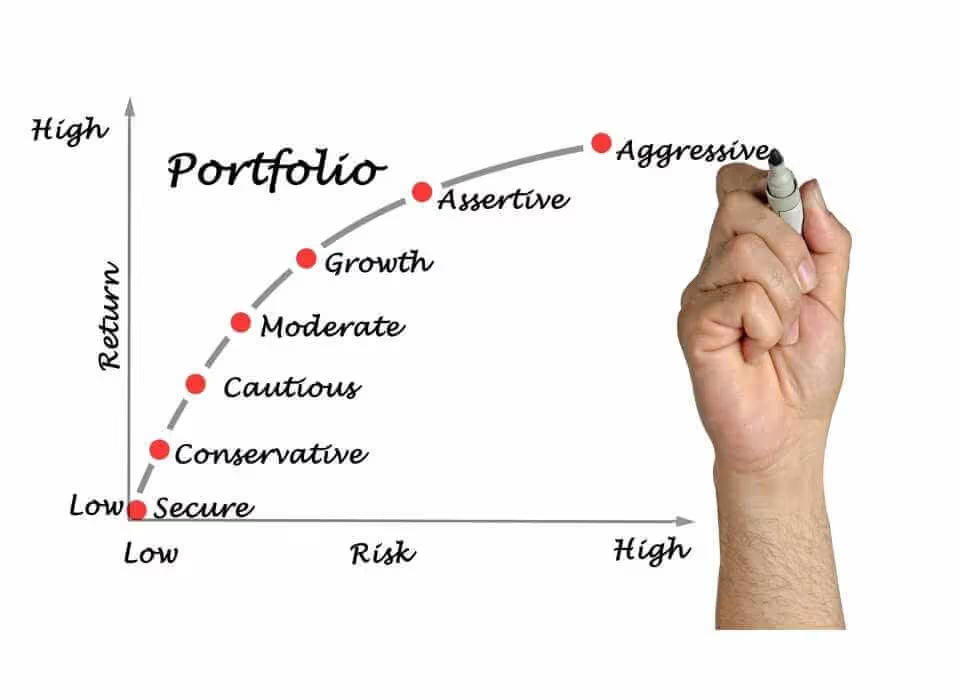Within the leadership community, caution signs are everywhere, and there is a strong sense of redirection due to current and future macroeconomic trends. In this economy, every penny counts. And it’s starting to show.
There are some companies, such as Ford, who are laying off thousands of employees in order to reduce costs.
Other reports show that spending on transformation is on a downward trend.

It’s no surprise that 73% of C-suite executives already have a cost transformation initiative underway or plan on launching one shortly.
However, these big headlines don’t tell you the full story.
When business leaders talk about slowing down and cost transformation, they refer to cost reset. In today's fiercely competitive and dynamic markets, leaders have gone back to basics. They started to prioritize resource re-alignment to support new strategic initiatives and invest in capabilities that enable agility and long-term growth.
What does that mean for PMO leaders?
This re-direction in C-suite priorities calls for a shift in how PMOs operate and what is expected of the PMO team.
Out With The Old, In With The New (Mindset)
We think that role of the PMO has changed in recent years and will continue to do so in the future. PMOs must pay attention to this shift because those who fail to demonstrate that they are a value-add, lose their credibility and get shut down sooner or later.
A staggering 75% of PMOs fail in their first three years.
As we see it, there are two key differences between the past and the future PMO role.
Traditional PMO plays more of an administrative role focusing on tactical metrics such as project management processes, standards, and governance. They are stuck in autopilot mode, merely focusing on finishing the projects instead of being proactive and demonstrating their value contribution.
However, as continuous disruptions shake the ground and competition intensifies, a new type of PMO leader has emerged.
Results-driven PMO leader with a focus on delivering business outcomes. These agile leaders are strategically oriented, driving decision-making by providing accurate information and helping companies pivot through continuous changes.
But why does it matter to embrace the new role?
According to Project Management Institute (PMI) report, PMOs from the top 10% of organizations are:
- twice as likely to improve revenue performance
- three times more likely to be better at customer satisfaction and acquisition

In addition, these PMOs proved to be a valuable ally to C-suite by aligning their activities with organization-wide strategy, measuring their impact, and influencing business performance.
Because of the turbulent global economy, now is the perfect time for PMOs to maximize their efficiency, help business leaders steer through changes, and invest in the most promising opportunities.
The days of being a watchdog are gone
There's more to it than just improving project and program success rates. PMOs must be relentless about delivering business value while balancing resources across portfolios. So, what should PMO leaders think about when creating a strategic PMO?
Here are four key insights to keep in mind:
Get inside the mind of the CEO and executive team
Delivering projects with no strategic value doesn't move the company forward and fails to deliver on C-suite expectations. This report shows that two-thirds of projects are misaligned with strategic business priorities.
However, PMOs are well positioned to create a stronger alignment between projects and strategy without losing sight of what each initiative must achieve to deliver desired business outcomes.
Based on the latest PWC report, organizations in the Top 10 Percent have PMOs that are more aligned with organizational strategy and are considered by executive leaders to be strategic partners.
How can you achieve this?
Focus on driving strategic dialogue at the top of the organization and building strong partnerships with C-suite to understand their goals better.
To do that, you need to have the big picture of how the business works and a clear understanding of the executive teams' main concerns.
You must gain as much knowledge as you can about the organization, including its:
- Products
- Services
- Market
- Customers
- Competitors
- Internal capabilities
As a result, you will be more effective at leading discussions that address strategic priorities, creating a most valuable portfolio mix, and speeding up the buy-in process.
Don't stop there, though. Once you achieve strategic alignment at the top, you should drive it across the organization.
This leads us to the next challenge business leaders face when driving organizational transformation and strategy execution.
Further readings:
Strategic Alignment: Why It Matters And How To Do It
Strategic Drift: How To Avoid Losing Competitive Advantage
Stop controlling. Start collaborating.
C-suite leaders seeking to launch new strategic initiatives discovered a new obstacle - a significant disconnect between their goals and the staff expected to help with strategy execution.
That’s not surprising. In Cascade’s Strategy Report 2022, we found:
- 98% of C-suite executives know the strategy vs. 79% of team members.
- 84% of executives feel like they’re part of the strategy vs. 46% of team members.
Even more alarming is that while 63% of C-level executives engage weekly with the strategy, only 18% of team members do so.
When companies fail to engage employees and bring people together, it’s almost impossible to convince them to embrace a new vision or change initiatives when your company needs to react.
How can PMO help to bridge the strategy and execution gap?
As the PMO leader, you have the power to prioritize collaboration and open information sharing above control and siloed structures.
The better you provide context around strategic initiatives, the better the other managers and project teams will be at decision-making and aligning with organizational goals.

A company culture with transparent and consistent communication will help leaders keep employees in alignment with the shifting priorities and help them connect to the critical role they have in helping the organization achieve the new strategic objectives.
According to Cascade’s Strategy Report, organizations with very high employee satisfaction are those where employees work toward shared strategic goals. This means that employees have a very clear understanding of the company’s overall strategy and how their daily efforts contribute to its success.
%2520(1).jpeg)
It is also impossible to ignore the impact of employee engagement on business performance. Business units with highly engaged employees can bring in 23% difference in profitability.
And that’s not all.
Ideally, a PMO leader is a link between C-suite and project teams to help leadership understand what’s happening on the frontline. Internal experts tend to have a pulse on the challenges in a way that people at the organization’s top don’t have.
Encouraging two-way information flow helps leaders and PMOs create better strategies and identify possible project execution constraints before things go south.
Further readings:
How To Improve Organizational Transparency
Why Democratic Leadership Brings Strategic Results
Address the elephant in the room
In an effort to implement SAP, Lidl spent €500 million before admitting the project was a complete failure. What went wrong?
Well, one of the reasons is that they failed to recognize new system requirements before starting the project. Instead of canceling the project while there was still time, they decided to close the requirement gap by trying to customize the software to match their existing business process. They completely underestimated the complexity of technology.
It took 7 years for the project to come to an end. In the end, Lidl lost money and valuable time it could have invested in other projects and optimizing its business processes.
What’s the solution?
Jack Duggal explains the importance of embracing failure in his book, The DNA of Strategy Execution: "If an organization can't learn to fail quickly and thoughtfully, it will fail to learn. And if it fails to learn today, then someday in the future, some big lessons will be forced upon it—to the detriment of its bottom line."
Great PMO leaders must be able to confidently challenge the executive team and bring up uncomfortable conversations. When you’re in a volatile business environment, you must remain vigilant to recognize underperforming projects and identify if they still align with the overall strategy. This agile approach will help you prevent losing money on failed projects and reallocate resources to more promising initiatives.
.jpeg)
Further readings:
Strategic Risk Management Strategies (With Examples)
Complex vs Complicated Problems: What’s the difference? (Expert opinion)
Take a hard look into your tech stack
This is a great opportunity to evaluate if you are armed with the right tools. Here are some questions you should be asking:
- Do I have tools that help me identify portfolio underperformance and failed projects in time?
- Are we able to shift resources easily, based on changing priorities?
- Are our teams having access to real-time data to make decisions faster?
- Do I have technologies and tools that impact my effectiveness and efficiency?
In today's rapidly changing environment, visibility is critical to enabling insights that can inform a diverse set of stakeholders from team members up to the executive level.
However, the problem is that most PMO teams still work with a plethora of tools, including PowerPoint, Excel spreadsheets, and basic project management tools like MS Project or Asana. Despite being great at managing individual projects, these tools don’t provide a top-level view of project portfolio performance.
They lock work into silos and the organization loses sight of who is doing what. This is crucial if you want to effectively manage interdependencies and deliver expected benefits.
You can’t drive game-changing tech transformation with yesterday’s tech—just ask Kodak, Xerox, and Blockbuster. As faster, more agile disruptors appeared, these companies didn’t react quick enough, choosing instead to rely on what had always worked.
Now, these former industry titans are merely cautionary tales of what will happen if you fail to evolve.
What is the solution?
Build the case for new technology that supports project portfolio management and drives strategy execution across the entire organization.
The right tool will help you to create a single source of truth for the organization’s portfolio, and that’s not all. You will be able to:
- Provide greater transparency into the project portfolio work taking place
- Avoid losing money on low value, duplicated efforts, and budget overruns
- Demonstrate the positive impact of the portfolio on business outcomes
- Improve the strategic planning process
- Ensure stakeholders have high-quality, up-to-date information they need to make a decision
- Optimize resources against the highest priority projects, even as priorities shift
Ready to discover the right project portfolio management solution for your organization? We’ve gathered and analyzed the 7 best options for PMO leaders and portfolio managers in 2022. Check it here.
PMOs Must Continuously Execute the Value
In the long run, the old way of looking at PMO's role in strategy execution could have a direct and possibly damning impact on your company's profitability, market share, and even its mere existence.
The purpose of a PMO leader is to drive value for the business. Instead of just ticking boxes and thinking about efficient processes, you must focus on delivering value where it matters—on the bottom line. Without this recognition, PMOs become irrelevant and administrative.
You should keep these things in mind if you want to move beyond the traditional PMO leader role and become a strategic partner:
- Prioritize projects and resource allocation aligned with the strategic objectives of the C-suite and course-correct as needed.
- Enhance the strategic alignment from the top-down and bottom-up.
- Embrace failure to eliminate dead-end strategies and reallocate resources.
- Encourage a culture that makes strategy everyone’s business and drives efficiency.
- Get the right tools to provide quick insights and guide better decisions.
With this outcome-focused approach, you will stay on top of cost optimization and help leaders invest in the right opportunities for business growth.
Further readings:
The top 10 PMO KPIs you should be tracking (+ how to track them)





.jpg)
.jpg)
%20(1)%20(1)%20(1)%20(1)%20(1).png)
.avif)



